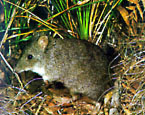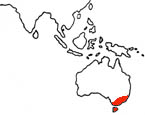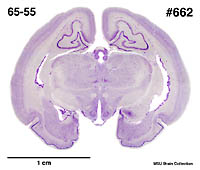|
Long-nosed
Potoroo
(Potorous tridactylus) #65-55 |
||||
|
|
Physical
characteristics and distribution
|
|
Head
and body length of P. tridactylus is 243-415 mm and tail length
is from 198-325 mm. Weights average from 660-2,200 grams. The
fur is straight, soft and loose. Coloration ranges from brownish
to grayish with the underparts lighter and the tail is usually
tipped with white. The muzzle of P. tridactylus is elongated,
hence the common name of Long-nosed Potoroo. Females have four
mammae within a well-developed pouch that opens forward. Nests
are believed to be built during the breeding season and then
only by females. Estrous cycles last 42 days and females are
polyestrous, breeding twice a year. Gestation is non-delayed,
usually resulting in one offspring. When the young is four days
old, the mother mates again. If the first baby is lost, the
new embryo will develop. If not, development will not occur
for about 4.5 months. At birth the baby is 14.7 - 16.1 mm long
and detaches from the nipple at about 55 days. It leaves the
mother’s pouch at 130 days and sexual maturity is reached
at one year of age for females. |
|
Description
of the brain
|
|
Animal
source and preparation
|
|
All
specimens collected followed the same preparation
and histological procedure.
|
Other Related Resources (websites and publications)
List of Specimens | Explore Collections | Brain Sections | Brain Evolution | Brain Development | Brain Circuitry | Brain Functions | Location and Use | Related Web Sites | Contact Us | Search MSU Database | Personnel | Home



